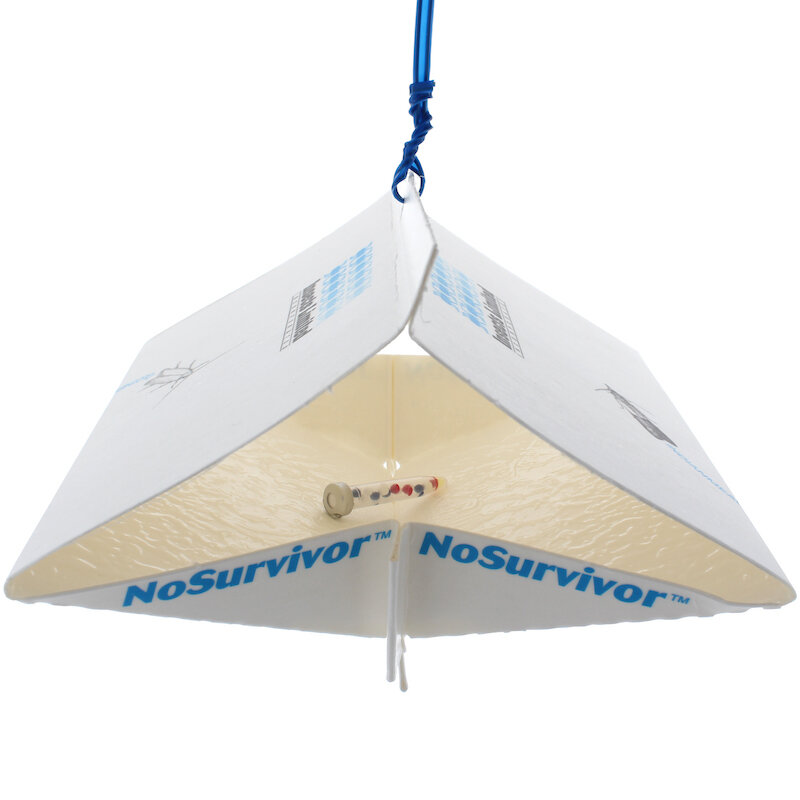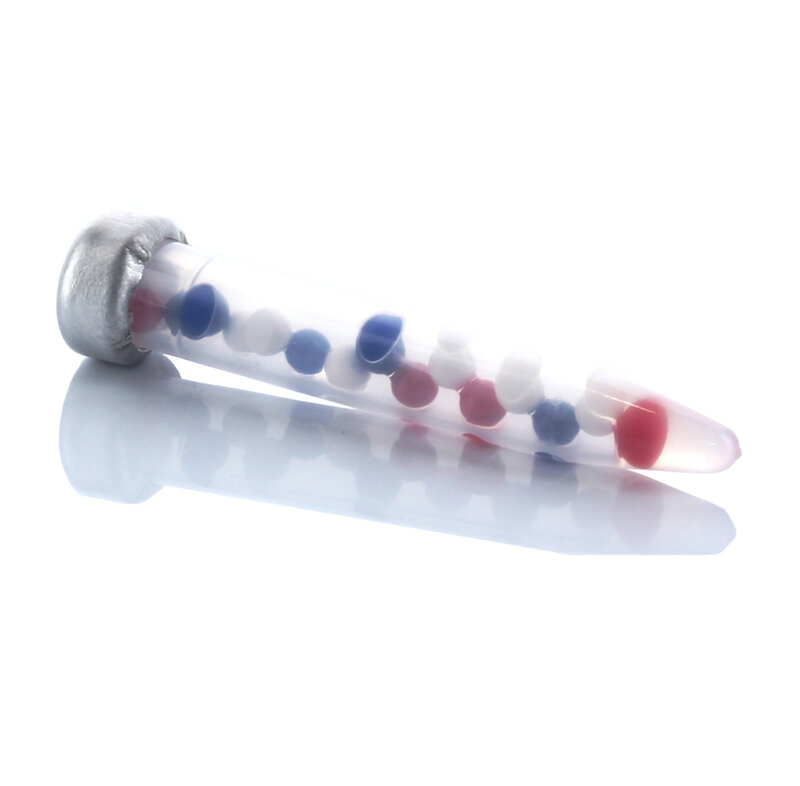Tobacco Moth (Ephestia elutella)
Tobacco Moth Pheromone Traps
Tobacco Moth Description
Tobacco Moth Adults: The wings from tip to tip are up to 16 mm (0.625 inch) and the hind wings are uniformly gray. The upper wings are grayish brown with two light colored bands extending across each forewing.
Tobacco Moth Eggs: Oval, ivory in color and 2 mm (0.08 inch) long.
Tobacco Moth Larvae: Cream colored, brown head capsule, with rows of spots along the back. Microscopic examination is required to separate from other Ephestia moths.
Tobacco Moth Pupae: Pupal cases are whitish with a yellow to brownish colored pupa inside.
Tobacco Moth Facts
Similar species include the Indian meal moth (Plodia interpunctella), Mediterranean flour moth (Ephestia kuehniella), and Almond moth (Cadra cautella)
Other common names for the tobacco moth include cacao moth, warehouse moth, chocolate moth, and mite moth.
Like many food moth species, adult Indian meal moths do not eat. Their larvae are vivacious feeders and damage dried goods.
Larvae produce large amounts of silk which can contaminate dried food goods and clog machinery.
Tobacco moths initiate flight at temperatures above 12.5°C (55°F).
The pheromone that attracts the tobacco moth also attracts over 20 other moth species (Ephestia spp., Cadra spp., and Spodoptera spp.).
Tobacco Moth Life Cycle
Adult moths live for 10-14 days. Mated females can lay 20-120 eggs singly or in groups. Eggs hatch in 3-5 days in warmer months and up to 7 days in cooler months. Larvae feed and become mature in 25-64 days depending on food quality, temperature and humidity. Larvae will wander and pupation will occur away from infested materials. Adults emerge from the pupae in 8 to 10 days depending on temperature.
Tobacco Moth Damage & Detection
Granular frass the size of ground pepper can be found in and on food materials such as tobacco, cocoa, nuts, dried fruits, cereals, processed foods containing wheat, rice, corn, nuts, and seeds. The use of pheromone traps and inspections can determine location and degree of infestation.
Tobacco Moth Monitoring Tips & Tricks
Tobacco Moth Monitoring Guidelines
Lure
BULLET LURE® - Contains sex pheromone to attract male moths.
Lure Storage
Keep unopened lures in cool storage less than 16°C (60°F) or place in the freezer for extended storage. Lures can remain frozen for up to 24 months or at room temperature for 12 months to retain their full effectiveness for use afterwards.
Trap Designs Used with Lure
NoSurvivor traps are diamond shaped sticky traps that can be hung from many locations. This design is the preferred trap for this moth that flies well.
The SightTrap™ is the size of a NoSurvivor hanging trap and provides daily images and catch data to help with early pest detection. The data is available on the web and app-based software, ForesightIPM.
Tobacco Moth Pheromone Traps
Tobacco Moth Pheromone Trap Placement & Use
Trap Placement Techniques
Pheromone traps can be placed out year-round but are especially recommended during warmer months when temperatures exceed 12.5°C (55°F). Place hanging pheromone traps 1.5 m (5 feet) above ground or at eye level to allow for easy inspection when monitoring traps. In areas such as a pantry or home, place one or two pheromone traps per room.
In commercial areas such as warehouses or retail stores, place pheromone traps 7.5–15 m (25–50 feet) apart to determine the presence or absence of tobacco moths. Increase pheromone trap density to 4.5–7.5 m (15–25 feet) apart to help locate the source of tobacco moths.
Keep pheromone traps 7.5 m (25 feet) away from exterior doors. Tobacco moth pheromone traps are best utilized in areas that store dried goods such as food, grains, seeds, nuts, dried fruit, animal feed, or pet food.
Trap and Lure Maintenance
Replace traps when glue is filled with insects or becomes dusty. Replace pheromone lures every 90 days. Replace all pheromone lures in a location at the same time. Do not cut the cap off the bullet lure. Do not stagger lure replacement over several weeks. Record date and number of catches to identify trending information.
Tobacco Moth FAQs
What is the tobacco moth life cycle?
Adult tobacco moths live for 10-14 days. Mated females can lay 20-120 eggs singly or in groups. Eggs hatch in 3-5 days in warmer months and up to 7 days in cooler months.
Larvae feed and become mature in 25-64 days depending on food quality, temperature and humidity. Larvae will wander and pupation will occur away from infested materials. Adults emerge from the pupae in 8 to 10 days depending on temperature.
What do tobacco moths look like?
The wings of the adult tobacco moth from tip to tip are up to 16 mm (0.625 inch) and the hind wings are uniformly gray. The upper wings are grayish brown with two light colored bands extending across each forewing.
Eggs are oval in shape and ivory in color and 2 mm (0.08 inch) long. Larvae are cream colored with a brown head capsule, with rows of spots along the back. Microscopic examination is required to separate from other Ephestia moths. Pupal cases are whitish with a yellow to brownish colored pupa inside.
How to get rid of tobacco moths?
The use of pheromone traps, otherwise called pantry moth traps, can indicate the presence of tobacco moths as well as where the moths are coming from. A visual inspection of dried food in the vicinity of the pheromone traps containing the most moths can reveal specific items containing larvae, pupae and adult moths.
Once infested materials have been identified, they should be sealed up and discarded into an outdoor trash receptacle or the materials should be sealed in plastic and frozen for a one-week period to kill all stages of the moths.
Tobacco Moth Pheromone Traps
Join Our Informed Community
Receive the latest industry updates as soon as they are published.






